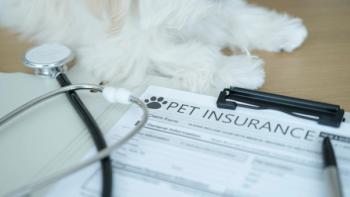
Financial management and budgeting: Part 3 (Proceedings)
What kind of things will veterinary owners need to do for the development of the business owner's skill set?
What kind of things will veterinary owners need to do for the development of the business owner's skill set? They will need to learn to develop and use good information from hospital data to make business decisions. They will have to stop running their practices based upon what's in the checking account and rely more on the financial data from, reports that can be printed from the veterinary software, financial statements and budgets. Reports from the veterinary software will tell you instances of services and what type of products and services are being sold. Not only that but they can tell you who made the sale. They report taxable vs. non taxable sales and what is being given away in discounts. Budgets will assist in setting the hospital's financial direction and achievement of desired goals including profitability. Financial statements will provide a sense of the past and report patterns of income and expenses as well as profitability. Most practices today are data rich and information poor. Today's practice needs less data and more information. Peter F. Drucker said "The fewer the data needed, the better the information. And an overload of information, that is, anything much beyond what is truly needed leads to information blackout. It does not enrich, but impoverishes." So what information should you develop for your practice?
Owners and managers need key operating information. They are sometimes referred to as the practice pulse points.
For tracking income and income statistics develop a report to track monthly sales, new clients, number of invoices and the average per invoice. Do the same for each of the doctors and provide them a copy of all reports each month. Also track the amount of accounts receivable each month to make sure credit and collection policies are in control.
Once you determine what your centers of revenue are, prepare financial reports in a manner that reflects these centers. For instance, if the hospital has strong retail, boarding and grooming activity as well as the practice of veterinary medicine, then report on a cost center basis to determine profitability in each of these centers. It will draw your attention to those areas of the practice that need or don't need work. Hopefully all activity areas of the hospital are profitable, but segmenting your operation may find that some areas are more profitable than others or some areas operate at a loss. Once you understand your reporting requirements, set up you accounting system chart of accounts in a way that will allow you to accumulate the information so it can be seen this way. Set up a schedule to receive monthly internal financial statements. Most should be able to close their books by the 15th day of the following month and have an internal financial statement prepared by the 20th . Prepare a budget and make the statements comparative to budget. Also make them comparative to last year's data. Prepare a budget based upon the same chart of accounts used to accumulate actual financial data so they will be comparative. Check the line items each month to determine where you might be out of line. Know where you stand in terms of profitability every month and whether you hit your budgeted target for profitability. Have your accountant provide you monthly standard entries every month for reoccurring items that effect profitability such as depreciation expense. Make sure whatever accounting adjustments your accountants make to complete your books and records are given to you so your records can match theirs. This will keep your record complete.
Understand that all costs in your hospital are either fixed or variable. Fixed expenses are those that remain the same regardless of the change in sales for the facility. These types of expenses include rent, utilities, insurance, etc. Variable expenses are those that move in direct proportion to sales. These costs include drug and supplies, lab costs and animal disposal costs. Once you can define these costs in your hospital understand the nature and relationship of these costs to changes in your hospital's revenue stream. How do they affect profitability? For instance, if you improve compliance with blood work and provide 100 additional pre-anesthetic blood tests, how will affect profitability? Once you are past the cost of the test and the labor to run it and interpret it, the remainder of the additional fee falls to the bottom line and the impact can be significant. The fixed costs of the hospital don't change. It is important to note that veterinary medicine is a fixed cost business and a majority of the costs to run the hospital are fixed.
With a good understanding of fixed and variable costs, know what it costs to open your door every day. This can be calculated by determining your fixed costs and dividing it by the number of days you are open. Also calculate a breakeven point for the hospital. The formula is:
Breakeven in sales = Fixed costs
Contribution Margin
- The contribution margin = 1-variable costs.
- Share this information with your staff.
The Monthly Statistical Analysis Report
Consider developing a monthly statistical analysis report for your practice. Take a pulse of your practice by understanding the monthly statistics that are important and track them in a comparative format; month to month, year by year. The information which should be tracked comes from your computer generated monthly reports. The most important statistics are as follows:
- Monthly gross sales
- New clients
- Number of invoices
- Average per invoice (ACT)
- Monthly accounts receivable balances
- Doctor production - share this information with your doctors
The Hospital Financial Statement
Revenue analysis
- Enhance your financial statement with a full revenue analysis.
- A hospital revenue analysis within the financial statement might look like the following:
o XYZ Veterinary Hospital
o Income Statement
o For the years ended December 31, 2007 and 2006
Financial statement
When hospital revenue areas look weak, look for issues within control systems to make sure all income is being earned.
Here are items to consider in each area:
Clinic Services
1. Are fees for exams and vaccines separated and charged appropriately?
2. Are sick pet visits charged when a medical issue arises but started as a wellness exam?
3. Do medical exams which are extended for eye, neurological, or orthopedic reasons become extended exams and charged as such?
Pharmacy
1. Revisit mark-ups on drug and medical supplies
2. Revisit hospital dispensing fees. Does the hospital have?
a. A counted and label fee?
b. A separate label fee for items sold in full bottles or tubes?
3. Does the hospital have set minimum prescription prices?
Diagnostics
1. Do X-Ray prices include an interpretation fee?
2. Does the hospital charge for different size films and additional views?
3. Does the hospital add on clinic expenses when outside ultrasound specialists come in to do procedures?
Hospital Services
1. Are surgeries and anesthesia procedures timed and billed accordingly?
2. Do hospitalization fees incorporate time spent by the nursing staff and the DVM?
3. Are hospitalization fees considered for day cases as well as overnight cases?
Lab Services
1. Revisit mark-up's on outside lab services. Are prices current with outside lab price schedule?
2. Do in house lab prices reflect the cost of the test, equipment and related payroll costs to run and interpret test results? Are invalid tests considered a part of the cost of service?
Over the Counter Sales
1. Revisit mark-up's on all items.
Hospital Fees and Discounting
Owners and associates should be reminded that they have a responsibility to adhere to their fee schedule. This point should be stressed to the associates, if not made a part of their contracts. If an associate has an issue with hospital fees, it should be either brought to a doctors meeting for a resolution amongst all or brought to management's attention in a one-on-one session. The use of hospital estimates should be mandated. Clients need a clear understanding of expected charges. When clients receive unexpected bills, they get angry. This usually creates billing issues and eventually bad debts. Bad debts reduce the bottom line.
With most veterinary software monthly accounts receivable reports can be created on a per-doctor basis. These should be printed for each doctor so they may review the status of unpaid balances related to their clients. This does not mean they need to have the responsibility to collect the account but certainly be made aware of it and to assist with collection when appropriate. Practice owners should also share with associates how much of their accounts receivable are written off each month. Hospital accounts receivable for small animal companion hospitals should never exceed 2.5% of the hospital's revenue and not more than 11% for large animal practices.
To further assist practice owners and associates, if the veterinary software allows, a daily fee exception report should be run by doctor to monitor fee overrides. This information should be shared with all doctors. Fee overrides should not be permitted.
Also, practices should monitor all manual discounts given. These should not be allowed. To alleviate any ill will regarding compassionate care, a doctor charity account can be set up for each associate for which they have the ability to use for free or reduced fee care. We recommend a $1,000 limit per doctor.
EXPENSES OF THE PRACTICE-You cannot make money cutting expenses in a hospital. The best you can do is to control them. Budgeting is the best way to do that. Also, benchmarking your practice to the industry averages will let you know if you are in line with others. Below are the industry averages for the most common expenses.
Expenses
Newsletter
From exam room tips to practice management insights, get trusted veterinary news delivered straight to your inbox—subscribe to dvm360.






